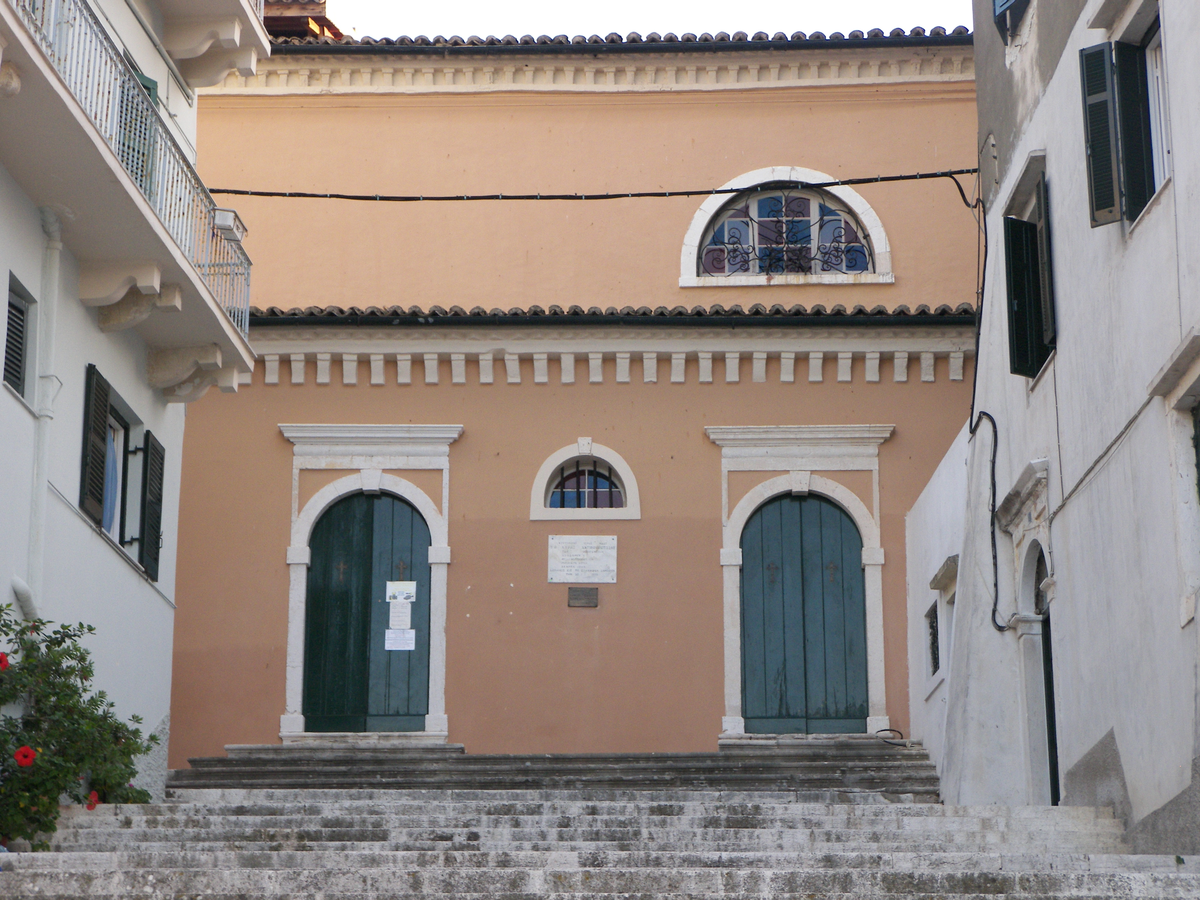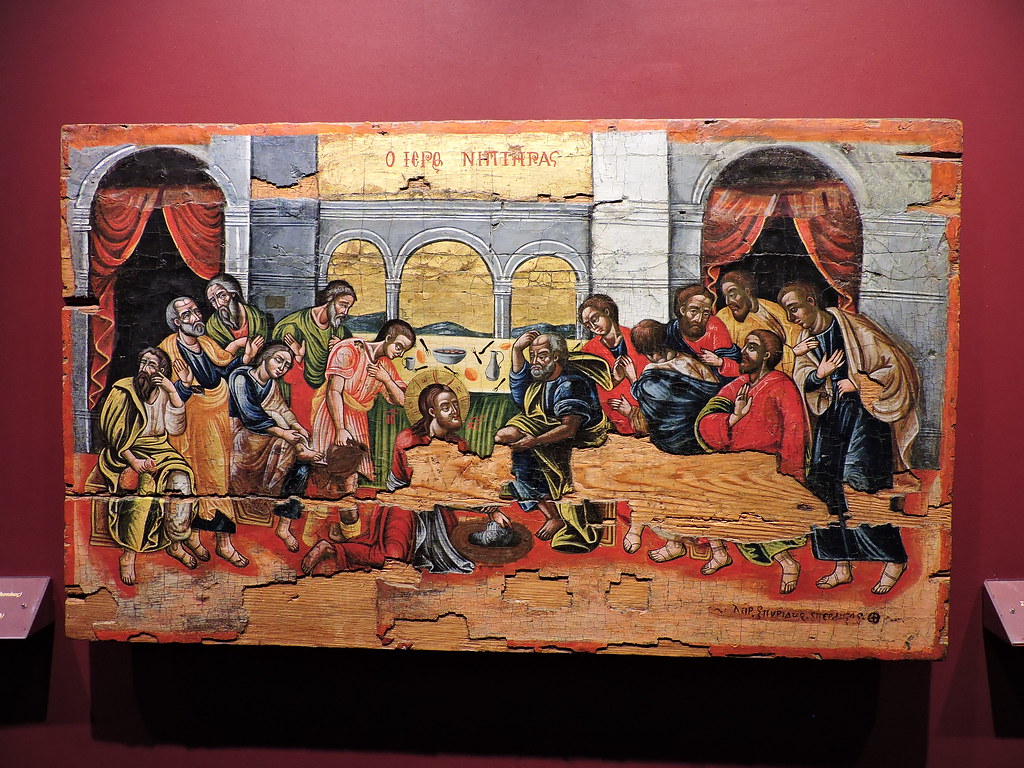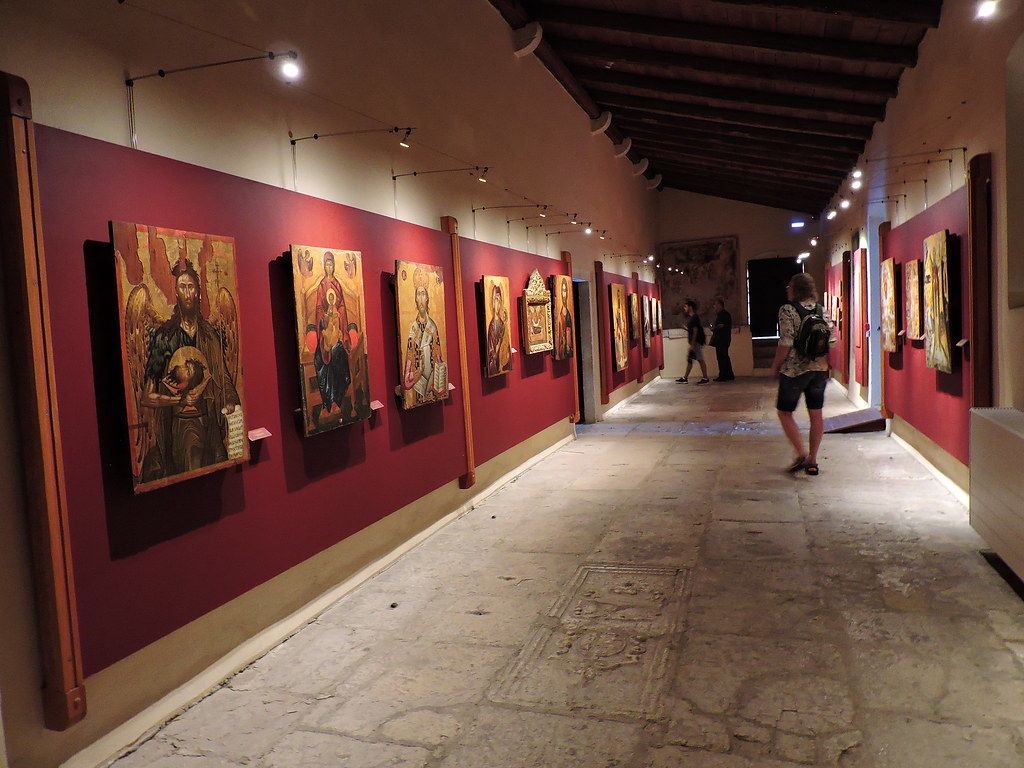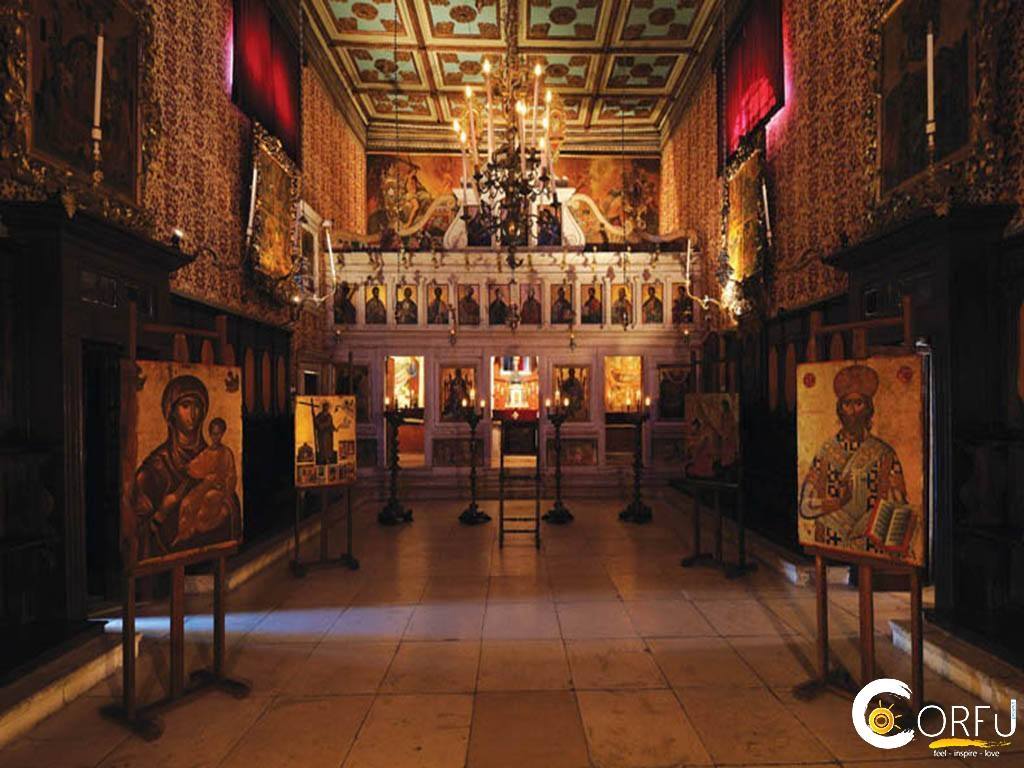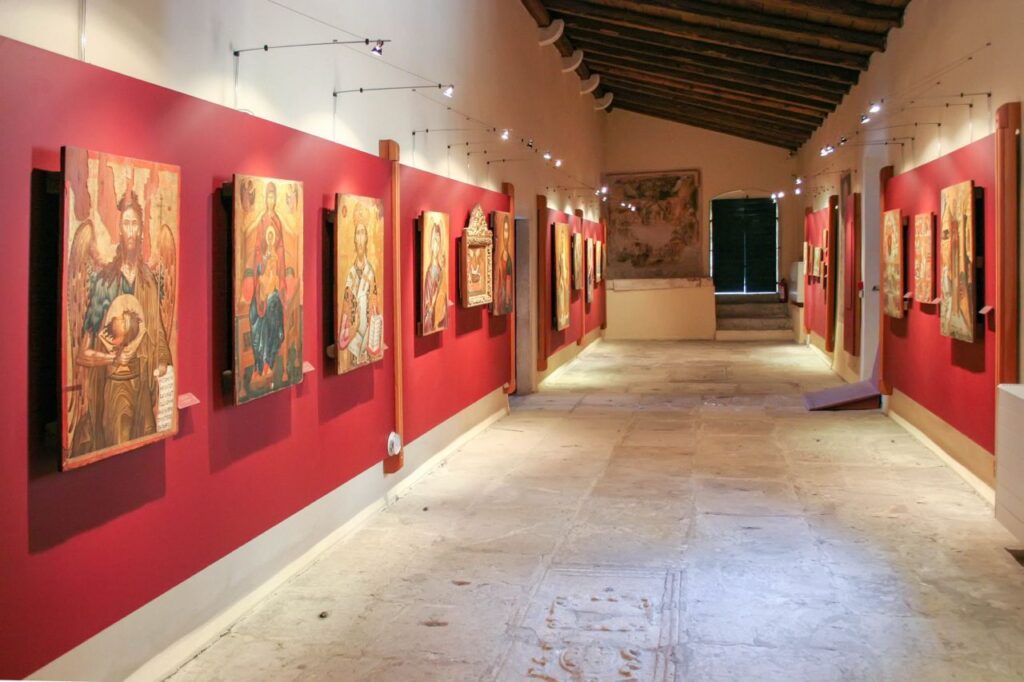The Antivouniotissa Museum is a museum of post-Byzantinereligious art of the Cretan and early Heptanese schools in Corfu, Greece. It is located in the former church of the Holy Mother of God Antivouniotissa (Greek for facing the mountain).
The museum
The basic consideration, in both the restoration work and the new display in the Antivouniotissa Museum, was to recreate the monument as a church. On the basis of archive photographs, the nave and the sanctuary reacquired their liturgical character as formed over recent centuries. All liturgical objects were replaced in their proper positions, and the pews and painted “wall-paper” were reconstructed. The narthexes became mainly exhibition areas, in which are displayed the icons from the church, and the larger part of the old collection of icons from the Museum of Asian art of Corfu, account being taken in the exhibition of the chronological, iconographical and stylistic characteristics of the objects.
The collection includes some important items, by both known and anonymous artists, dating from the 15th to the 19th century, and thus gives a full picture of the religious and artistic output during this period on Corfu, as well as the intellectual movement more generally. Like the Ionian Islands, Corfu became a stopping point and place of residence for artists, mainly from the Cretan School, en route from Crete to Venice, particularly after Crete fell to the Ottoman Empire in 1669. This was the birth of the Heptanese School.
This movement of both artists and artistic trends, combined with a dedication to the Orthodox doctrine, Byzantine survivals, and direct contact with the West, led to the creation over the centuries of a high-quality artistic aesthetic and models, not only amongst the locals. The Antivouniotissa Museum, through works by artists from Nicholas Tzafouris, Michael Damaskinos and Emmanuel Lambardos to Emmanuel Tzanes, Victor and Michael Avramis, and others, is fully representative of five centuries of religious artistic expression.
